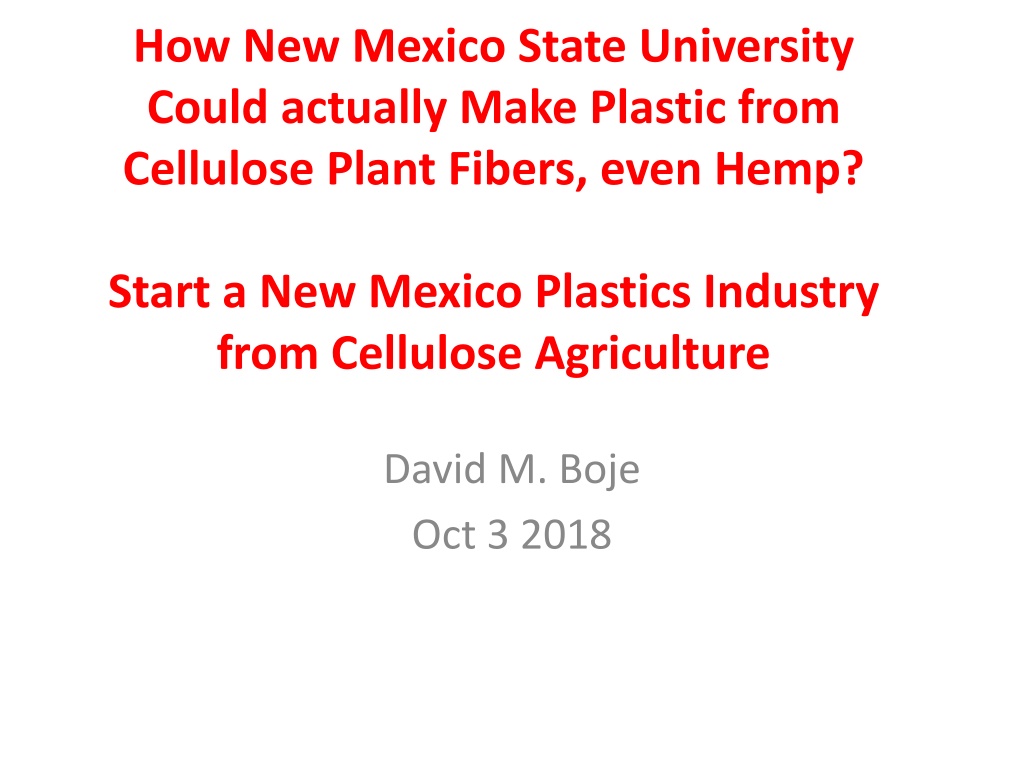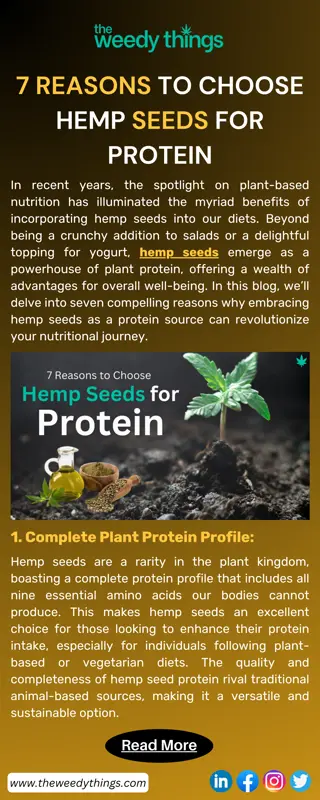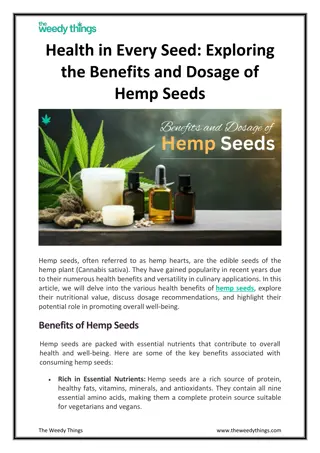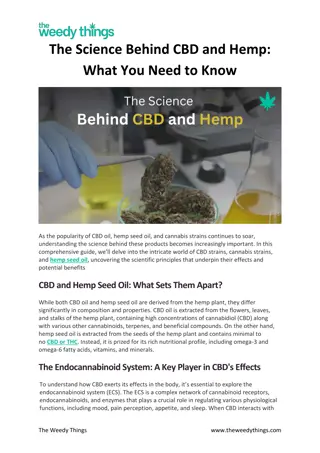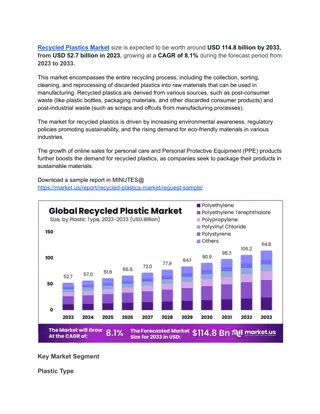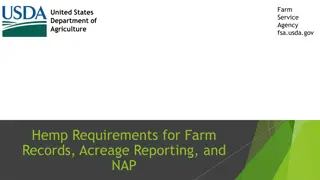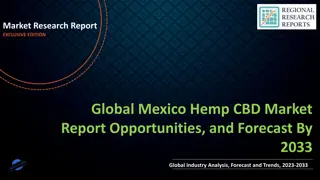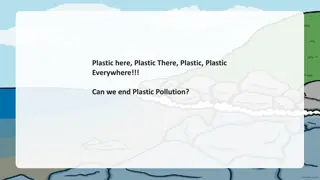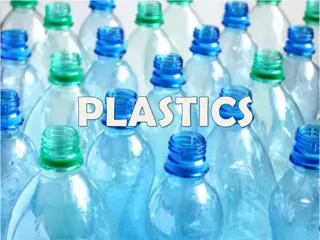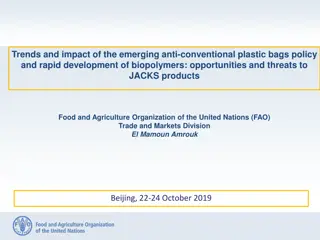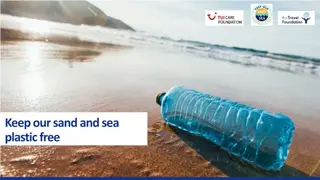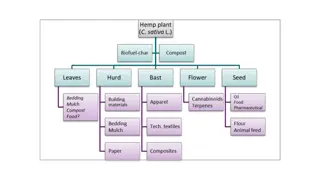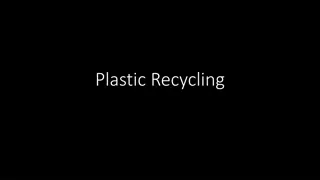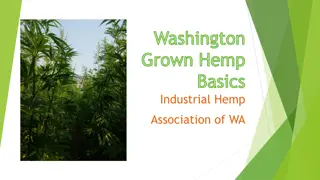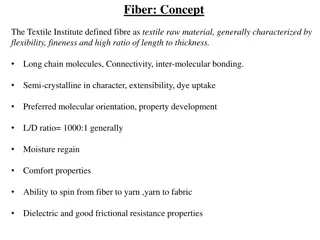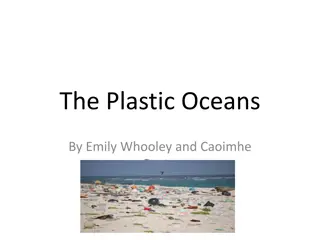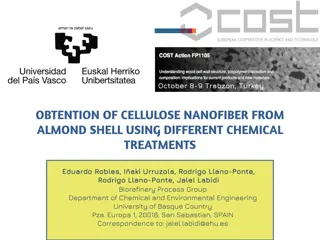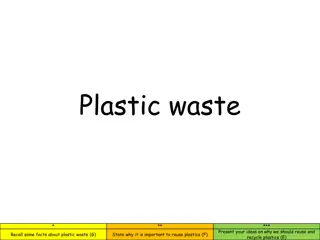Revolutionizing Plastics: Making Cellulose-Based Plastic from Hemp in New Mexico
New Mexico State University could lead the way in establishing a plastics industry using cellulose plant fibers, such as hemp, to create eco-friendly and sustainable plastic products. Zeoform, a material made from cellulose fibers and water, offers a patented process to form industrial-strength plastic. Hemp cellulose is a promising source for plastics due to its sustainability and low environmental impact, containing around 65-70% cellulose. The process involves powderizing hemp, mixing with water, forming microfibers, molding into desired shapes, and creating biodegradable products, like BioPlastic made with corn starch. By leveraging the abundant cellulose resources, New Mexico can drive innovation in sustainable plastic production.
Download Presentation

Please find below an Image/Link to download the presentation.
The content on the website is provided AS IS for your information and personal use only. It may not be sold, licensed, or shared on other websites without obtaining consent from the author. Download presentation by click this link. If you encounter any issues during the download, it is possible that the publisher has removed the file from their server.
E N D
Presentation Transcript
How New Mexico State University Could actually Make Plastic from Cellulose Plant Fibers, even Hemp? Start a New Mexico Plastics Industry from Cellulose Agriculture David M. Boje Oct 3 2018
https://ministryofhemp.com/blog/why-isnt-hemp-plastic-everywhere
Zeoform is a revolutionary material that changes everything http://www.zeoform.com Made from cellulose fibers and water and absolutely nothing else, our patented process converts cellulose fibres into an industrial strength molding material capable of being formed into an unlimited array of products. https://www.youtube.com/watch?v=kZXmbkO6iuo how Zeoform can make cellulose plastic that is super lightweight
Why NOT? Hemp cellulose making Plastic Products in New Mexico Cellulose is the most abundant organic polymer found on Earth https://sensiseeds.com/en/blog/hemp- plastics-made/ It is fundamental part of the cell walls of plants and many species of algae. Although cellulose is primarily used to make paper, it is also used to make a range of different plastics including celluloid, cellophane and rayon Cellulose is a long-chain polysaccharide with the chemical formula (C6H10O5)n that consists of hundreds or thousands of linked glucose units
Hemp Cellulose Hemp cellulose can be extracted and used to make cellophane, rayon, celluloid and a range of related plastics, reported Seshata, a writer at Sensi Seeds in 2014. Hemp is known to contain around 65-70% cellulose, and is considered a good source (wood contains around 40%, flax 65-75%, and cotton up to 90%) that has particular promise due to its relative sustainability and low environmental impact.
How to Make Plastic Hemp? Step 1 powderize https://www.youtube.com/watch?v=O9qoJs3 wP3M Step 2 mix with water Step 3 Fibulae the mix to make super strong microfiber that is very light and durable Step 4 Spray, mold, or press into shape of your choice Step 5 Biodegradable
Recipe 1: How to Make your own BioPlastic with Corn Starch? 1 tb corn starch 4 tb water (heat water in pot) 1 tsp glycerin (acts as pliable additive; add less for solid mass result) 1 tsp vinegar INSTRUCTIONS: Mix and let cool to white milky mixture. Keep mixing. Stir till thickens to gel. When bubbles up its done. Spread on silicon heat pad (or aluminum foil), and let dry. https://www.youtube.com/watch?v=5M_eDLyfzp8 ; another version: https://www.youtube.com/watch?v=R3PJeK859iA has more precise process and explaination
2ND HOME RECIPE FOR BIOPLASTIC Ingredients: https://www.youtube.com/watch?v=bydzCfMQ944 3 BANANA PEELS, VINEGAR, WATER, HONEY, THYME, AND CINNAMEN Cut banana peels and blend. Add other ingredients and stir and stir in pan, then put on burner, while site as it boils up, off the heat and stain out water. Use the baste as the plastic Press on oven paper into shape
3rd Recipe for Bioplastic Use Jicama make starch, mix with glicerin and vinegar, etc. https://www.youtube.com/watch?v=T3yWRx- ootE
4th Recipe uses paper to make Plastic Paper is made from cellulose. Can be use to make film, eye glass frames, tooth brush handles, etc. Add some acids, and let sit for hour with occasional stirring to open up the fibers. Not for a home use, takes some chemistry background https://www.youtube.com/watch?v=yMG0yfG FJ00
5th & 6th Recipe, orange peels plastic https://www.youtube.com/watch?v=gJEOGriA5O o Or from potatoes starch (BBC good one)https://www.youtube.com/watch?v=Lhigu23 NQlw Make jewelry with this one https://www.youtube.com/watch?v=-7KCzldr75o
6th Recipe uses Potato Starch to make Plastic https://www.youtube.com/watch?v=Lhigu23NQlw Plastic from Potato Starch Recipe (good flexibility) 1 Tbls Potato Starch 1 Tbls water 2 Tsp White Vinegar (acts as an acid) 2 Tsp Glycerine (acts as plastic sizer) 1 Tsp Food Coloring 1/2 Tsp Sodium BI-Carb
7th Recipe commercial processes from Agri-waste Bioplastic Agri-waste to make it https://www.youtube.com/watch?v=oGtlE4M DcMs Products to make from it (India) with good slide presentation of the data:https://www.youtube.com/watch?v=oGtl E4MDcMs
Dream Story of a New Future Hemp as a source of bio-ethanol Hemp is often overlooked as a source of ethanol, but various studies have assessed its potential and found favorable results. While sucrose-containing crops like sugar cane and starchy crops like corn are higher overall producers of ethanol, they are more energy- intensive, more environmentally damaging, and in higher demand for other purposes such as to provide food. https://sensiseeds.com/en/blog/hemp-plastics- made/
